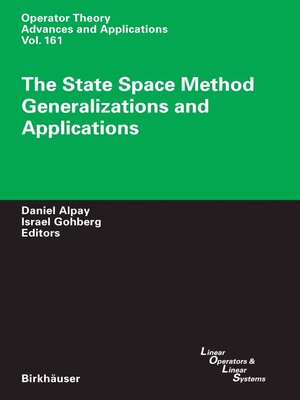The State Space Method
ebook ∣ Generalizations and Applications · Operator Theory: Advances and Applications
By Daniel Alpay

Sign up to save your library
With an OverDrive account, you can save your favorite libraries for at-a-glance information about availability. Find out more about OverDrive accounts.
Find this title in Libby, the library reading app by OverDrive.



Search for a digital library with this title
Title found at these libraries:
| Library Name | Distance |
|---|---|
| Loading... |
Thisvolumeofthe Operator Theory: Advances and Applications series (OTAA) isthe ?rst volume of a new subseries. This subseries is dedicated to connections between the theory of linear operators and the mathematical theory of linear systems and is named Linear Operators and Linear Systems (LOLS).Asthe- isting subseries Advances in Partial Di?erential Equations (ADPE), the new s- series will continue the traditions of the OTAA series and keep the high quality of the volumes. The editors of the new subseries are: Daniel Alpay (Beer–Sheva, - rael), Joseph Ball (Blacksburg, Virginia, USA) and Andr´ ´ e Ran (Amsterdam, The Netherlands). In the last 25–30 years, Mathematical System Theory developed in an ess- tial way. A large part of this development was connected with the use of the state space method. Let us mention for instance the "theory of H control". The state ? space method allowed to introduce in system theory the modern tools of matrix and operator theory. On the other hand the state space approach had an imp- tant impact on Algebra, Analysis and Operator Theory. In particular it allowed to solve explicitly some problems from interpolation theory, theory of convolution equations, inverse problems for canonical di?erential equations and their discrete analogs. All these directions are planned to be present in the subseries LOLS. The editors and the publisher are inviting authors to submit their manuscripts for publication in this subseries.







